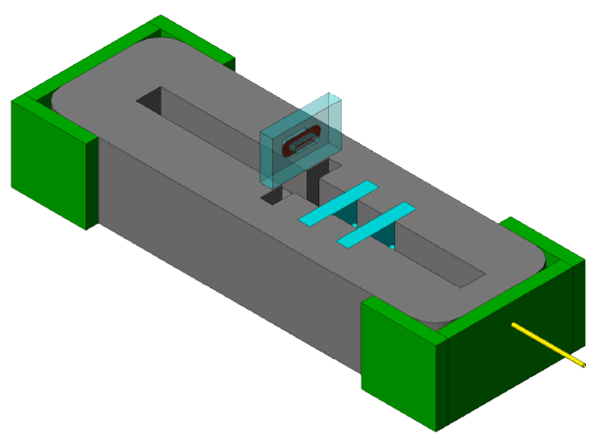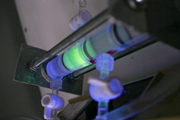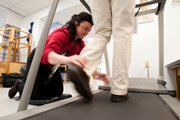Projects
 Our projects have included challenges presented by biomedical engineering faculty, clinicians, members of the local community, and biomedical industry partners.
Our projects have included challenges presented by biomedical engineering faculty, clinicians, members of the local community, and biomedical industry partners.
Types of projects include:
- Clinical devices
- Biomedical research technology
- Biomedical optics technology
- Ultrasound and imaging technology
- Accessible technology to enable daily activities
Previous Projects:
- Archive (by Year) of BME Design Day Projects
- Gallery of BME Student Projects
- Gallery of CMTI MS Student Projects
 Clinical Devices
Clinical Devices
Proximity to the University of Rochester Medical Center makes it possible for our students to work closely with physicians, nurses and therapists in the design of devices for use in a clinical setting.
Whether designing for surgical procedures, intensive care medicine, physical rehabilitation or the emergency room, our students learn about the challenges of the clinical environment and the procedures involved in regulation of medical devices.
Projects have included:
- Airway suction catheters
- Stents for liver surgery
- Blood pressure monitors
- A vestibular evaluation chair
- A biopsy needle for reduced blood loss
- A wheelchair sizing device
 Biomedical Research Technology
Biomedical Research Technology
Working with faculty from the Department of Biomedical Engineering, student projects have developed research methods to investigate a variety of cutting-edge medical technology.
Often these projects develop prototypes for early benchtop experiments used to evaluate novel measurement techniques related to cell and tissue engineering.
For example, students have:
- Developed microscopy-based systems to characterize cell adhesion and pulmonary surfactants
- Investigated novel bioreactors to study red blood cell development and cartilage tissue engineering
- Examined systems for transdermal drug delivery for asthma treatment
- Developed a system to test a serial filtration method using silicon nanofilters
- Developed prototypes to measure head accelerations during daily activities and to quantify physical activity in children who are overweight
 Biomedical Optics Technology
Biomedical Optics Technology
The use of optical technology has revolutionized numerous medical devices, whether for the surgical suite, the doctor’s office, or remote locations.
Our students have worked with faculty from the Center for Visual Science and the Institute of Optics to investigate improvements to:
- Vision correction surgery
- Methods for bedside blood analysis
- Sublingual monitors for the ICU
- Procedures for minimally invasive spinal surgery
Optical detection systems have been evaluated for urinalysis, saliva testing, or portable radiation or E. coli detection.
Their prototypes have helped to refine clinical research studies, to investigate preliminary concepts, and to forge ongoing collaborations between engineers and clinicians.
 Ultrasound and Imaging Technology
Ultrasound and Imaging Technology
The University of Rochester has considerable expertise in the area of medical imaging, including the Rochester Center for Biomedical Ultrasound and the Rochester Center for Brain Imaging. Capitalizing on this expertise, our students have developed:
- Prototype filters and robotic needle-steering systems for improving the accuracy of image-guided cancer treatments
- Improvements to liver and cardiovascular stent systems and biopsy procedures
- Image analysis methods to use video to study the activity of experimental animals
- A prototype ultrasound transducer used to detect and monitor air emboli in the vena cava that may occur during brain surgery
- Low-cost alternatives for fracture detection using ultrasound or specialized technology such as magnetic resonance imaging to study chronic back pain
 Accessible Technology to Enable Daily Activities
Accessible Technology to Enable Daily Activities
The ultimate goal of many biomedical engineers is to design devices that have the potential to improve people’s lives. Part of this is creating technology to assist individuals who face physical challenges due to illness or disability.
Each year, our students develop prototypes that help people with disabilities manage their daily activities—whether at home, on a college campus, or at work.
For example, students have designed devices to help:
- Children who are quadriplegic interact with their environment
- Others understand the difficulties caused by hearing loss
- People manage medications at home
Student teams often consult with the University of Rochester Disabilities Cluster, a group of individuals dedicated to enhancing awareness of disability issues in the areas of education, health care, research and inclusion.
